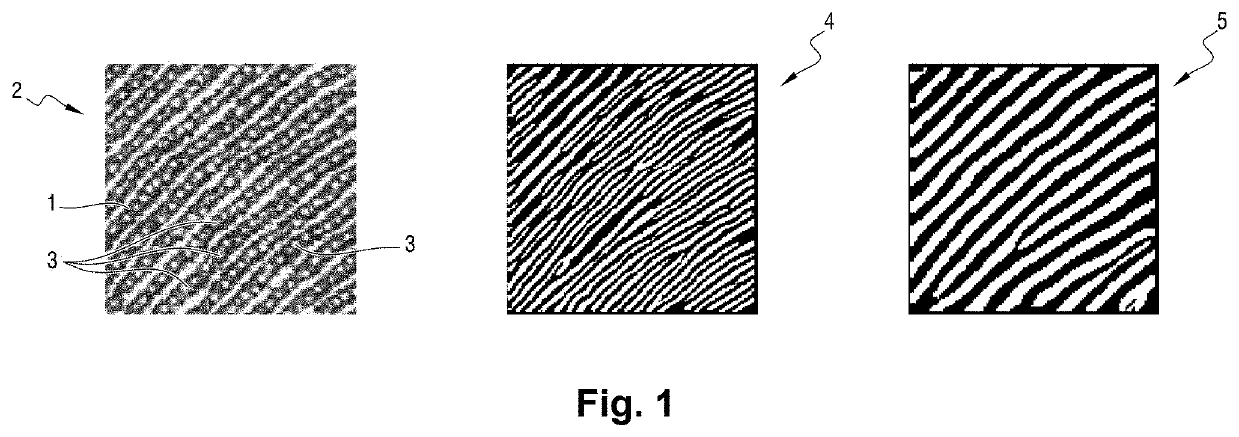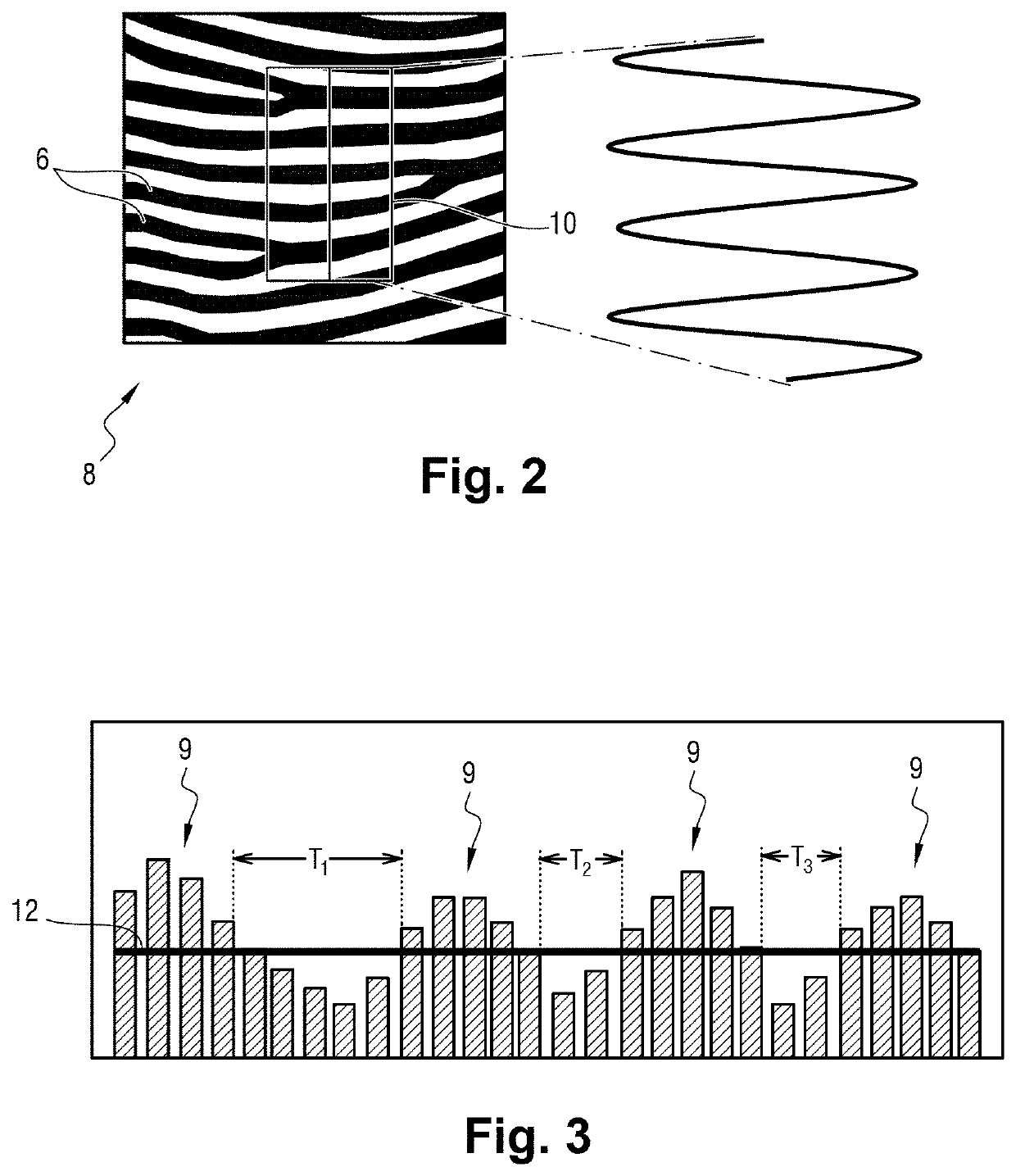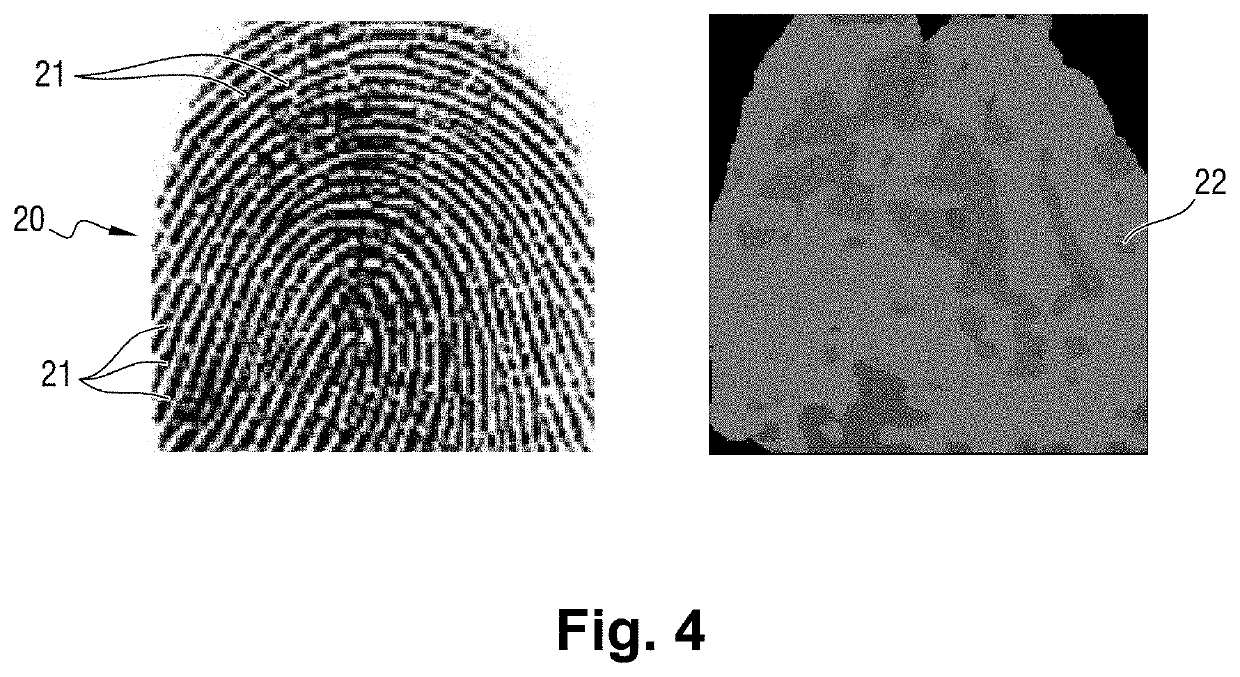Method of analyzing a fingerprint
a fingerprint and fingerprint technology, applied in the field of fingerprint analysis, can solve the problems of difficult to accurately evaluate duplicate ridges, and difficulty in accurately evaluating the local frequency of ridges, and achieve the effect of improving the estimate of the frequency of ridges
- Summary
- Abstract
- Description
- Claims
- Application Information
AI Technical Summary
Benefits of technology
Problems solved by technology
Method used
Image
Examples
Embodiment Construction
[0034]With reference to FIG. 4, the analysis method of the invention consists initially in acquiring a fingerprint image 20 representative of an individual's fingerprint. In this example the fingerprint is literately the print of a finger, however it could be some other papillary print, e.g. a palm print.
[0035]The fingerprint image 20 is acquired using a sensor, e.g. an optical sensor, a thermal sensor, an ultrasound sensor, etc.
[0036]Thereafter, the analysis method comprises a certain number of steps all of which are performed by an electrical processor unit. The term “electrical processor unit” is used to mean any type of fixed or mobile electrical equipment that includes one or more processor components (microcontroller, processor, field programmable gate array (FPGA), digital signal processor (DSP), etc.) suitable for executing instructions of a program for performing the tasks that are dedicated thereto (and in particular for performing at least part of the analysis method of t...
PUM
 Login to View More
Login to View More Abstract
Description
Claims
Application Information
 Login to View More
Login to View More - R&D
- Intellectual Property
- Life Sciences
- Materials
- Tech Scout
- Unparalleled Data Quality
- Higher Quality Content
- 60% Fewer Hallucinations
Browse by: Latest US Patents, China's latest patents, Technical Efficacy Thesaurus, Application Domain, Technology Topic, Popular Technical Reports.
© 2025 PatSnap. All rights reserved.Legal|Privacy policy|Modern Slavery Act Transparency Statement|Sitemap|About US| Contact US: help@patsnap.com



